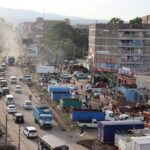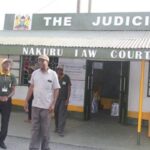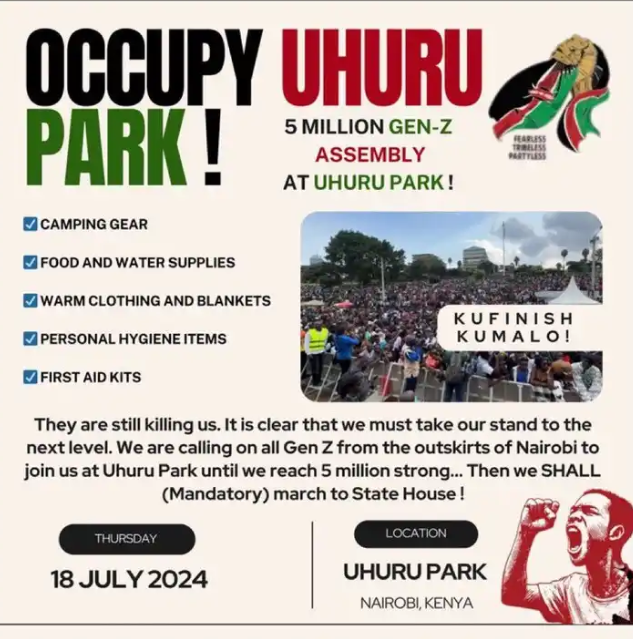Yesterday, protests erupted in several parts of Kenya, including Nairobi, Kisii, Karatina, and Mombasa.
The demonstrations, marked by violence and chaos, resulted in numerous injuries, two fatalities, and significant property damage as youth set fires and burned tires on the roads.
The protesters demand the resignation of President William Ruto, citing incompetence and an inability to effectively govern.
The unrest was part of a broader movement led by Generation Z, who plan to protest every Tuesday and Thursday.
Following the events of yesterday, activist Wesley Kibande shared Thursday’s plan via his X handle, calling for a massive turnout at Uhuru Park in Nairobi County.
The goal is to gather five million participants to march to State House, expressing their dissatisfaction with President Ruto’s administration.
Kibande’s post detailed the Thursday strategy, urging Gen Z from across Nairobi to assemble at Uhuru Park.
The protesters view President Ruto as an enemy, accusing his government of killing peaceful demonstrators.
Their demands for his resignation are rooted in a belief that the current administration is failing to address the needs and rights of the people.
The plan to occupy Uhuru Park and march to State House reflects the protestors’ determination to make their voices heard.
The movement’s call for unity underscores the belief that only a large, cohesive effort can bring about the desired change.
The protesters hope to achieve their goals through peaceful demonstration, in accordance with the constitutional right to peaceful assembly.
The government’s response to the protests has been harsh, with reports of police using live ammunition and tear gas to disperse crowds.
This has drawn widespread condemnation from human rights organizations and local leaders, who warn that such measures only escalate tensions.
The violent dispersal methods have increased public outrage and solidarity among the protestors, further fueling the movement.
Social media has played a crucial role in organizing and mobilizing the protests.
Activists like Wesley Kibande use platforms like X to communicate plans and rally support.
The digital space has become a battleground for ideas and strategies, allowing for rapid dissemination of information and real-time updates on protest activities.
While the protests have been marred by violence, there is a strong call from various quarters for peaceful demonstration.
The constitutionally guaranteed right to peaceful assembly is a cornerstone of democracy, and many hope that the upcoming protests will adhere to this principle to prevent further loss of life and property.
The protests across Kenya signify deep-seated frustration and demand for change among the youth, particularly Generation Z.
Their call for President Ruto’s resignation reflects a broader desire for competent leadership and accountability.
As the movement plans to continue its demonstrations, the hope remains that future protests will be peaceful, allowing for the expression of grievances without further violence.
With significant implications for Kenya’s political landscape and the preservation of democratic rights.





















Add Comment